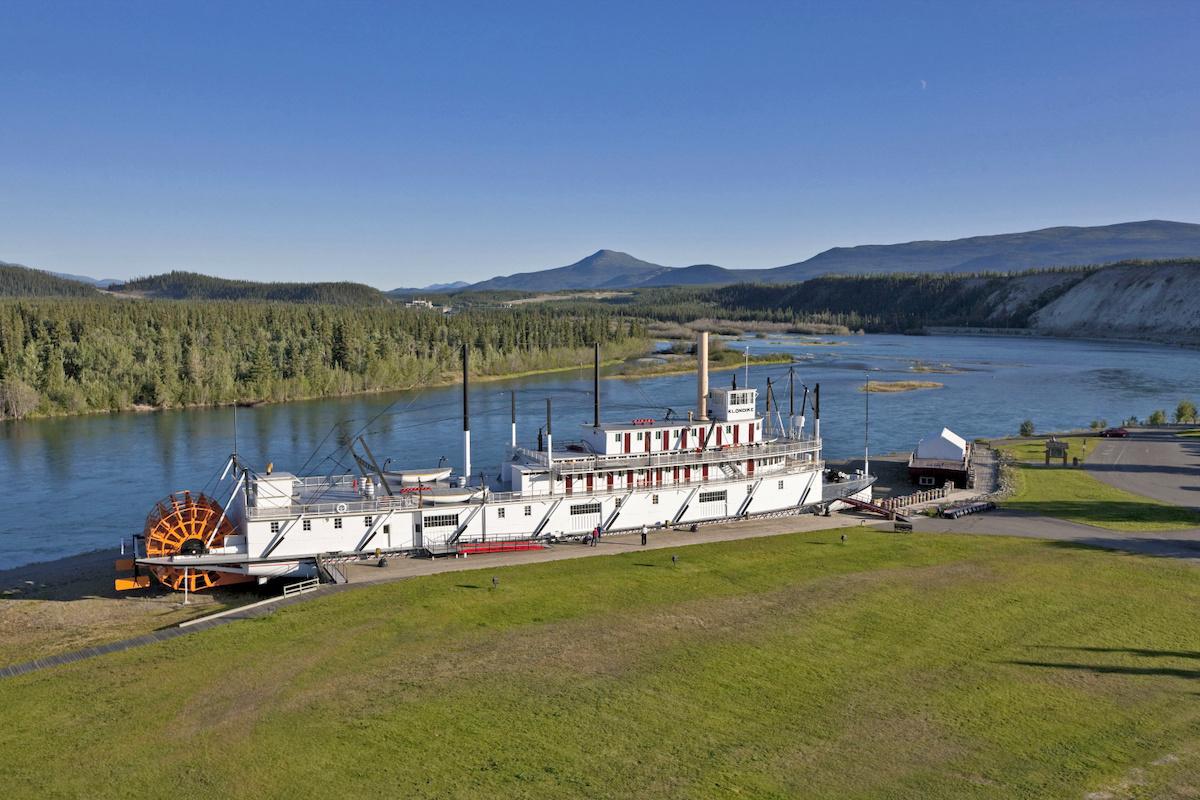
At Bellevue House National Historic Site, visitors are asked to share their thoughts/Parks Canada
There was something about the guided tour of New York’s Tenement Museum a few years back that resonated as the engaging guide asked about our thoughts and experiences and went where the conversation took us instead of just droning on with a dull prepared script.
I didn’t know it then, but it’s a technique called dialogic interpretation, or dialogic learning, and it’s being increasingly used to create shared journeys. And it’s a technique that Parks Canada has been quietly rolling out in its national historic sites, both with and without guides.
“Dialogic interpretation is one of the tools in the toolbox that we have to share our places with visitors,” explains Marie-Sophie Desaulniers, manager of visitor experience planning and product development. “The goals are to stimulate empathy, increase knowledge and encourage action. Fundamentally, it’s really a philosophy of how you help visitors go through a series of questions to attain these three objectives.”
Parks Canada really started embracing dialogic interpretation in 2015, using it to talk about complex and difficult topics like reconciliation, the environment and climate change.
In Kootenay National Park in British Columbia, interpretive signs installed in 2020 along part of the Simpson River trail draw people into thinking about forces of nature like lightning, wildfire, regeneration and succession.

The S.S. Klondike National Historic Site now engages visitors in conversations about reconciliation/Parks Canada
In Whitehorse, Yukon, the S.S. Klondike National Historic Site used to gloss over the negative parts of its legacy. Now it has expanded the story to include how the sternwheeler that travelled the Yukon River took Indigenous children from their homes to residential schools, how the jobs went to white men and how Indigenous travellers were relegated to the lower decks.
Stella Patera, visitor experience and site manager, said guided tours have been rewritten to include dialogic interpretation that brings guests into the conversation.
The same thing goes for Bellevue House National Historic Site in Kingston, Ontario. The site tells the story of Canada’s first prime minister, John A. Macdonald, who lived in the house from 1848 to 1849.

A Bellevue House visitor shows her French statement that translates as: "In my country, we would remember the First Nations."/Parks Canada
For the last several years, visitors have been encouraged to explore the many viewpoints related to his legacy and confederation, something that’s especially timely as Canada grapples with the discovery of 215 children’s bodies found buried at a former residential school in Kamloops, British Columbia. Macdonald played a key role in creating the government-sponsored religious, residential school system, which tore children from their families to wipe out their culture, language and rights, largely under the watch of the Catholic church, until 1996.
Elizabeth Pilon, Bellevue’s visitor experience product development officer, says the site has a “Many Voices of Confederation” exhibit in its visitor’s centre that “offers a lens on different perspectives and different voices” and how views on confederation have evolved. It’s “more inclusive and truthful” with Indigenous and minority voices woven in with the others.
There’s also an interactive “Imagine a Country” exhibit that makes use of dialogic interpretation by getting people to write out how they would form a country by completing open-ended statements like “In my dream country everyone would be able to…” and “The first law that I would pass in my dream country would be…” There’s even a photo booth so people can snap shots of themselves with their whiteboards. The photos instantly appear on a screen and are worked into an ongoing curated slideshow.
“I see all ages participating in the activity,” says Pilon. “To me, that’s the biggest win of the activity. I also see people standing there for half an hour looking at all the different responses. People feel they are contributing to the content of our exhibit. There are really thoughtful ideas, as well as fun ones from the kids that are as valuable to us as the serious ones.”
Dialogic interpretation, Pilon says, gets people to think and reflect on their own opinions. Bellevue House plans to incorporate more dialogic interpretation at what it calls “feedback stations.”
As Desaulniers explains, each interpretation tool has its place. Museums in the 1980s were very didactic and school-like, much “I stand in front of you as a crowd and I tell you what I know.” In the 1990s and early 2000s, that evolved, especially at science centres, into increased participation and interactive teaching. For museums, it became “you do it, you try it, you give it a shot.”
Dialogic interpretation is the next step in the ongoing evolution. It’s about saying “I have some knowledge and together we can bring our understanding and our empathy and our knowledge base further so we can take action.”
“Fundamentally, I don’t just want you to know what I know,” says Desaulniers. “That’s not the interesting part. I want you to have fun and feel like you’re in a place having an opportunity to grow, where you can look at somebody else’s story in a way you didn’t think before. And for that to happen, you have to be part of the dialogue.”

 Support Essential Coverage of Essential Places
Support Essential Coverage of Essential Places



